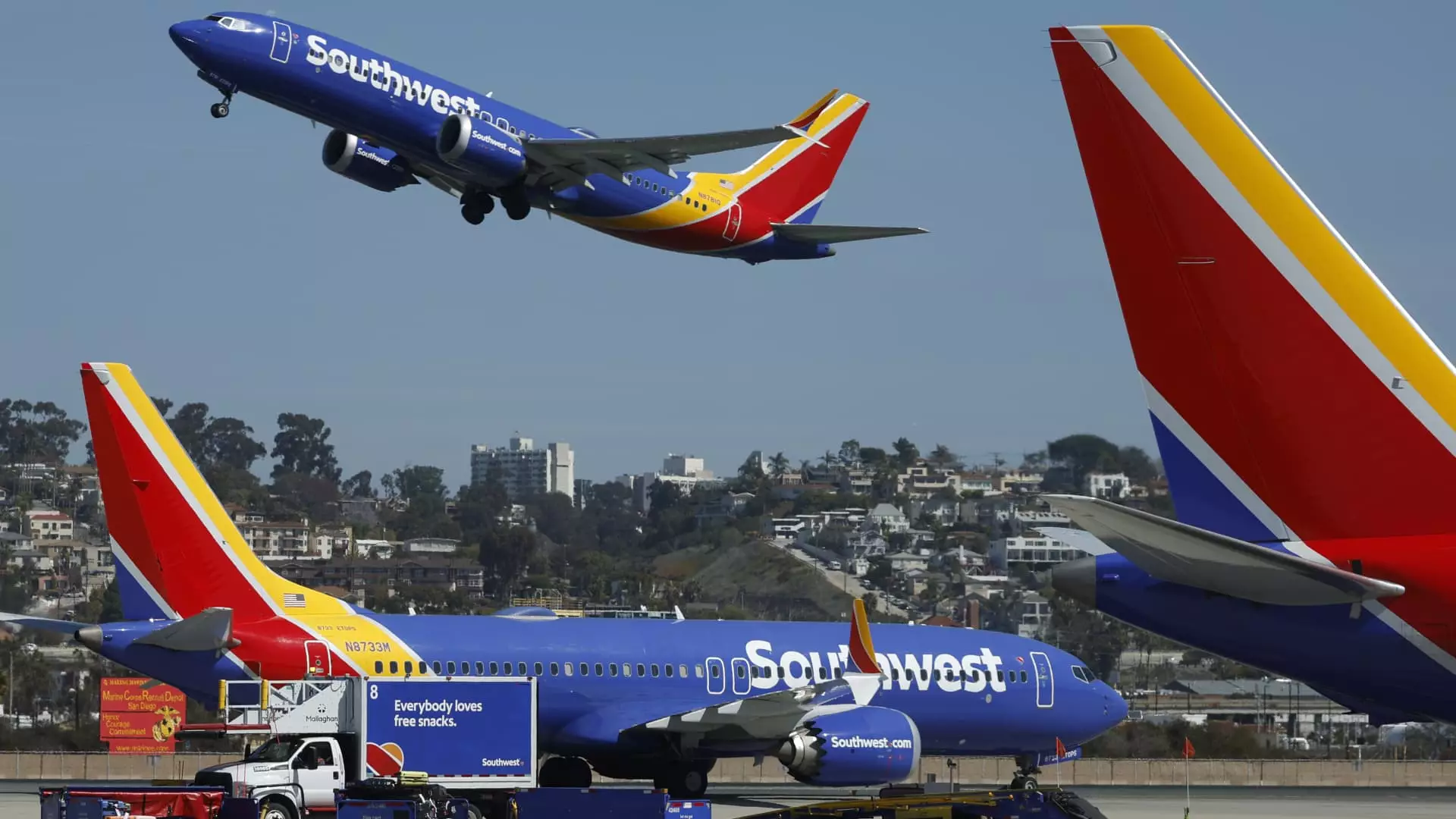Southwest Airlines has long been viewed as the scrappy, low-cost carrier of the airline industry, synonymous with no-frills travel. However, as the airline begins to explore potential transformations under CEO Bob Jordan’s leadership, it is clear that a paradigm shift is necessary to attract and retain the high-spending customer segment. The goal should not just be about keeping pace with competitors but about redefining what it means to provide value in air travel. Customers are asking for luxurious airport lounges and premium seating options, and the airline must be ready to respond. By embracing these changes, encountering less slogan-driven marketing and more consumer-driven innovation will ultimately position Southwest as a strong contender in a crowded market.
Carving Out a Niche Amidst Strong Competition
The recent statements from Jordan regarding the possibility of long-haul international flights signal a much deeper issue in the airline’s strategy. Competitors like Delta, United, and American are not merely offering premium services; they are aggressively expanding their reach into luxury travel. Southwest’s reluctance to shift gears and its historic focus on budget-conscious travelers might be its own undoing. If it intends to keep the truly high-value customers who are increasingly flying with their competitors, it must diversify its offerings from the basic models it has clung to for decades. This isn’t just about clawing back passenger numbers; it’s about maintaining relevance in an evolving sector.
Open to Change or Stuck in Tradition?
One of the most significant challenges Jordan faces is balancing the company’s traditional model with the need for new avenues of revenue. Southwest has traditionally relied on open seating, a simplified cabin layout, and two free checked bags. These practices set the airline apart but have also painted it into a corner. It’s time for the airline to reconsider its reluctance to adopt certain features that others already offer, such as premium seating and loyalty programs. Rolling out revamped premium offerings may not only entice luxury travelers but also satisfy existing customers who feel underwhelmed by bare-bones service.
Understanding customer feedback is critical. The opening up of potential high-end amenities could serve as a win-win situation that retains loyal who might be tempted by the promises of competitors. By being responsive to the desires of these passengers rather than clinging to outdated business models, Southwest could reclaim its status as an innovative leader in customer service.
Market Expansion and New Horizons
The conversation surrounding potential long-haul international flights speaks volumes about Southwest’s aspirations but raises critical questions about practicality. A mere consideration of entering the European and broader international markets is a tantalizing prospect. Yet, it requires more than just talk; it necessitates investment in appropriate aircraft and partnerships that can facilitate such routes. While Jordan has hinted at a gradual rollout for long-haul destinations, without solid planning and execution, these ambitions may remain only dreams.
While the airline has already struck partnerships with Icelandair and China Airlines, there is a need to expedite this developmental pace rather than waiting for an undefined future moment. It signals stagnation and hesitation rather than forward-thinking, both of which could push potential customers towards better-prepared competitors.
The Financial Imperative: Navigating Economic Uncertainty
The mention of an activist investor pressuring Southwest to improve its revenue profile is telling of the pressures facing airline executives today. With domestic airfares declining and competition seeking to recover from the pandemic fallout, airlines must innovate to survive. Jordan’s discussions around lounges and premium services are not merely customer service enhancements—they are financial imperatives.
By potentially alienating high-spending customers who seek comfort and prestige in their travel experiences, Southwest risks a downward spiral in both passenger volume and revenue. The mid-tier offerings that still provide some value will eventually not suffice when other airlines are unafraid to invest in exclusive amenities that cater to a wealthier clientele.
Ultimately, Southwest’s journey is fraught with challenging decisions around its identity and vision. The company can no longer afford to exist in a dichotomy between low-cost travel and premium service—it must forge a balanced identity that embraces quality without sacrificing affordability. The clock is ticking; the time for taking bold, transformative steps is now.


Leave a Reply